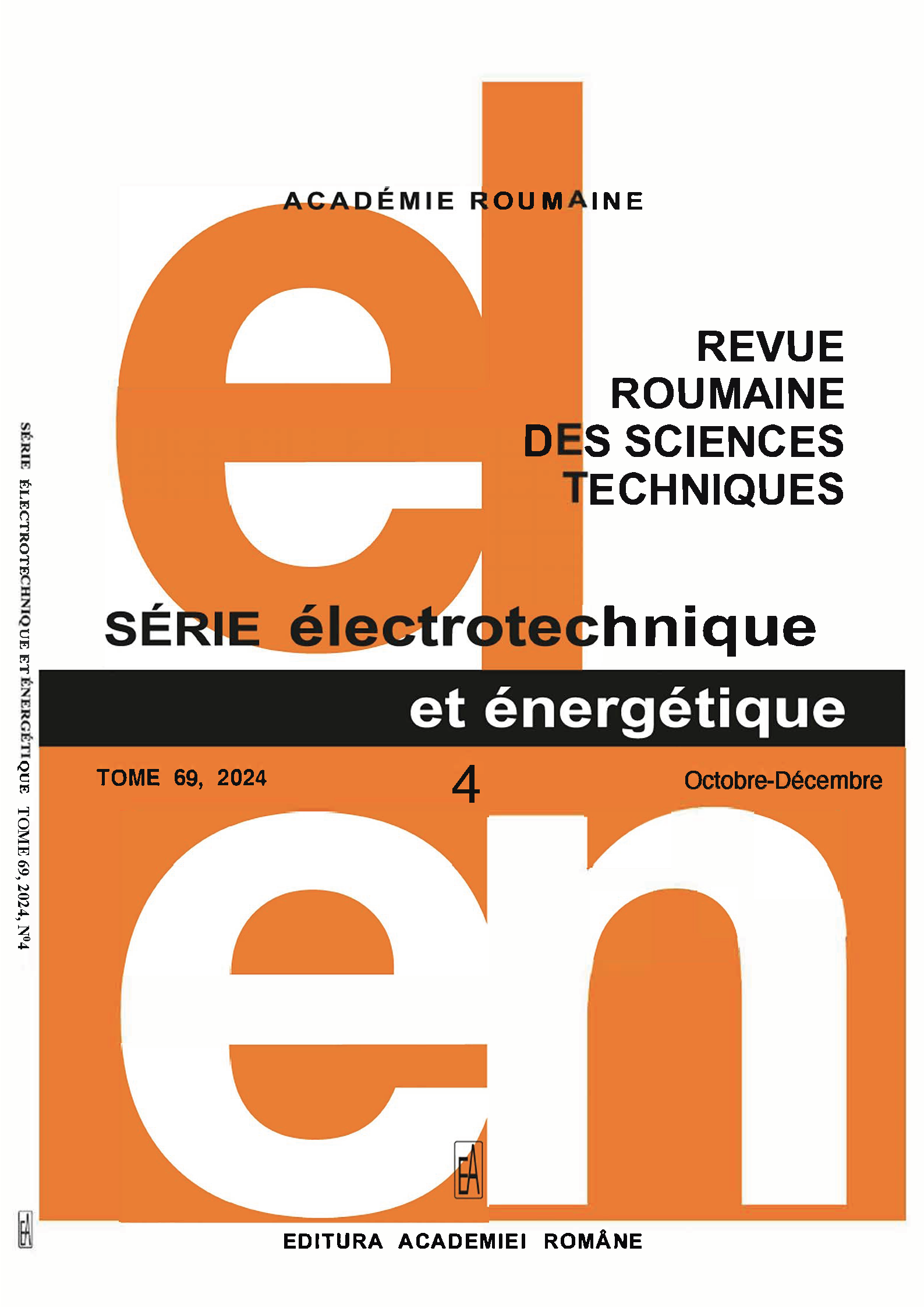MISE EN ŒUVRE DU REDRESSEUR DE VIENNE AVEC COMMANDE DE MODE GLISSANT POUR LES STATIONS DE RECHARGE DE VÉHICULES ÉLECTRIQUES
DOI :
https://doi.org/10.59277/RRST-EE.2024.69.4.10Mots-clés :
Véhicule électrique, Station de charge, Contrôle du mode coulissant (SMC), Facteur de puissance, HarmoniquesRésumé
Ce travail recommande d'utiliser une borne de recharge pour véhicule électrique (VE) utilisant un redresseur de Vienne (VR) avec contrôle de mode glissant. Le redresseur de Vienne est préféré pour les applications haute puissance en raison de sa distorsion harmonique réduite et de sa correction améliorée du facteur de puissance. Le contrôle du mode coulissant est utilisé pour réguler la tension et le courant de sortie du redresseur, permettant une charge fiable et efficace des véhicules électriques. Le système suggéré est modélisé et les résultats de la simulation sont présentés pour démontrer la valeur de l'approche recommandée concernant la stabilité, la résistance et la réactivité inattendue. La technologie proposée devrait contribuer au développement de bornes de recharge pour véhicules électriques plus fiables et plus efficaces.
Références
(1) M.H. Islam. M.A. Razzak, Power factor correction for single phase loads using modified Vienna rectifier, 3rd International Conference on Electrical Engineering and Information Communication Technology (ICEEICT), pp. 1–6 (2016).
(2) H. Komurcugil, S. Ozdemir, I. Sefa, N. Altin, O. Kukrer, Sliding-mode control for single-phase grid-connected $mbox{LCL}$-filtered VSI With double-band hysteresis scheme, IEEE Transactions on Industrial Electronics, 63, pp. 864–873 (2016).
(3) G. Rubio-Astorga, J.D. Sánchez-Torres, J. Cañedo, A.G. Loukianov, High-order sliding mode block control of single-phase induction motor, IEEE Transactions on Control Systems Technology, 22, pp. 1828–1836 (2014).
(4) A. Mallik, J. Lu, A. Khaligh, Sliding mode control of single-phase interleaved totem-pole PFC for electric vehicle onboard chargers, IEEE Transactions on Vehicular Technology, 67, pp. 8100–8109 (2018).
(5) A.N. Arvindan, D.K. Akshay, E. Siby, K.M. Keerthana, Efficacy of hysteresis current control in the single-phase Vienna rectifier topologies for improved power quality, International Conference on Power and Embedded Drive Control (ICPEDC), pp. 318–325 (2017).
(6) S. A. Shaon, K.M.A. Salam, Study of Vienna rectifier and a highly efficient single phase two stage inverter with low THD, 8th International Conference on Electrical and Computer Engineering, pp. 619–622 (2014).
(7) U.K. Shinde, S.G. Kadwane, S.P. Gawande, M.J.B. Reddy, D.K. Mohanta, Sliding mode control of single-phase grid-connected quasi-Z-Source Inverter, IEEE Access, 5, pp. 10232–10240 (2017).
(8) S. Hou, J. Fei, Y. Chu, C. Chen, Experimental investigation of adaptive fuzzy global sliding mode control of single-phase shunt active power filters, IEEE Access, 7, pp. 64442-64449 (2019).
(9) B. Guo, M. Su, Y. Sun, H. Wang, H. Dan, Z. Tang, B. Cheng, A robust second order sliding mode control for single-phase photovoltaic grid-connected voltage source inverter, IEEE Access, 7, pp. 53202–53212 (2019).
(10) U.K. Kalla, B. Singh, S.S. Murthy, C. Jain, K. Kant, adaptive sliding mode control of standalone single-phase microgrid using hydro, wind, and solar PV array-based generation, IEEE Transactions on Smart Grid, 9, pp. 6806–6814 (2018).
(11) A. Kumar, D. Sarkar, P.K. Sadhu, power quality improvement in induction heating system using Vienna rectifier based on hysteresis controller, Electric Power Components and Systems, 48, pp. 892–905 (2020).
(12) J. Fei, Y. Chen, Fuzzy double hidden layer recurrent neural terminal sliding mode control of single-phase active power filter, IEEE Transactions on Fuzzy Systems, 29, pp. 3067–3081 (2021).
(13) A. Arpadžić, A. Bosović, A. Merzić, M. Musić, Impacts of deregulated and regulated electric vehicle charging in a distribution network, Rev. Roum. Sci. Techn. – Électrotechn. Et Énerg., 67, 4, pp. 451-456 (2022).
(14) D. Ziane, A. Azib, A. Oubelaid, N. Taib, T. Rekioua, D. Rekioua, Proposed power factor correction circuit based on the single-ended primary-inductor converter controlled by sliding mode control strategy used in an electric vehicle charging station, Rev. Roum. Sci. Techn. – Électrotechn. Et Énerg., 67, 3, pp. 241–245 (2022).
Y. Yuan, Z. Zhang, A single-phase Vienna rectifier with wide output Voltage Range, IEEE Transactions on Transportation Electrification, 8, pp. 3884–3895 (2022).
Téléchargements
Publiée
Numéro
Rubrique
Licence
(c) Copyright REVUE ROUMAINE DES SCIENCES TECHNIQUES — SÉRIE ÉLECTROTECHNIQUE ET ÉNERGÉTIQUE 2024

Ce travail est disponible sous licence Creative Commons Attribution - Pas d'Utilisation Commerciale - Pas de Modification 4.0 International.


